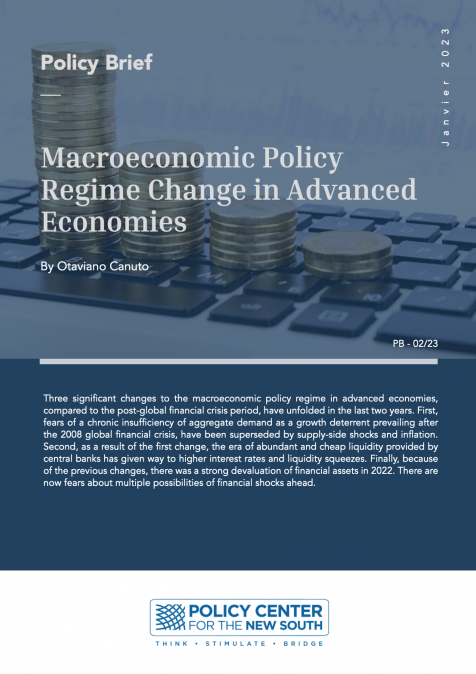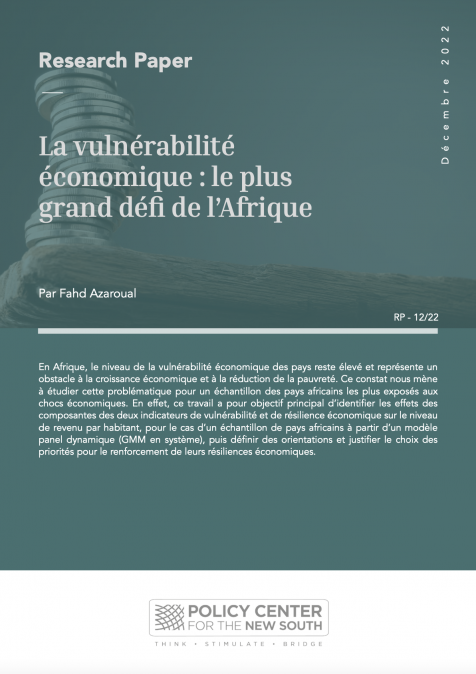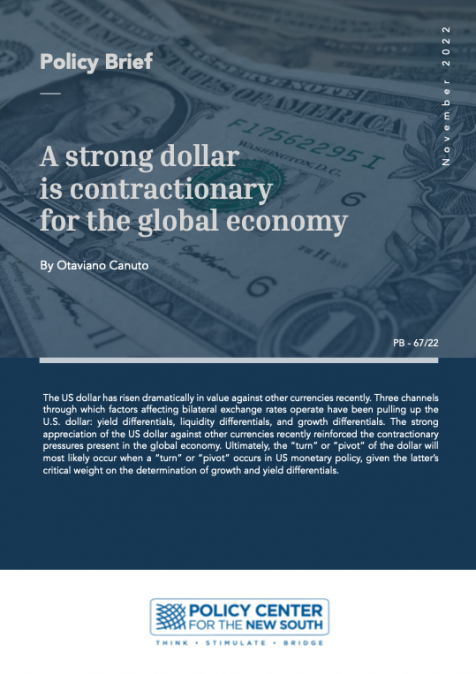Private balance sheets have risen relative to GDP in advanced economies in the last decades, in tandem with a trend of decline in long-term real interest rates. Asset-driven macroeconomic cycles, along with a structural trend of rising influence of finance on income growth and distribution, have become part of the landscape. Underlying secular trends of stagnation may also be suggested, making the macroeconomic dynamics dependent on the balance sheet economy getting bigger and bigger.
Speakers

Otaviano Canuto
Senior Fellow
Senior Fellow at the Policy Center for the New South, Affiliate Professor at Mohammed VI Polytechnic University and Non-Resident Senior Fellow at Brookings Institute. Former Vice President and Executive Director at the World Bank, Executive Director at the International Monetary Fund (IMF) and Vice President at the Inter-American Development Bank.
...










